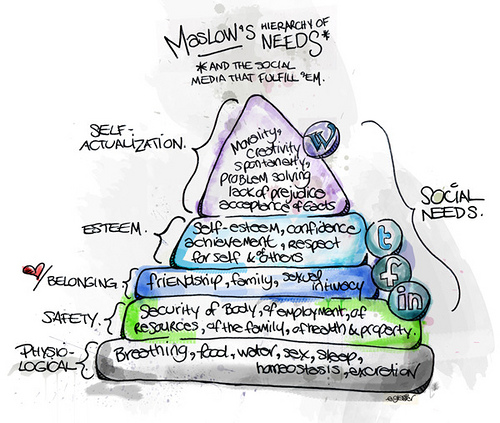A collaborative medium, a place where we all meet and read and write.
Tim Berners-Lee
[ 1) story, 2) pictures, 3) users, 4) content, 5) structure, 6) social media, 7) evaluation]
Today, we have the technology to design websites that do justice to Berners-Lee’s vision without getting bogged down in code and pixels. Web design is communication and there is a science to communicating well. (Which is not the same as science communication, that’s another blog altogether.)
Communication: What’s the story?
At heart, humans are storytellers and a website is a place to shape a narrative, tell a story, and create an experience. Fictional journalism and creative non-fiction exist because we have long recognised the power of a story to move us and influence our behaviour. Charles Dickens would read out parts of his novels to the wealthy as entertainment whilst raising money for Gt Ormond St Hospital for Sick Children.
But, Napoleon Bonaparte was right when he said a picture is worth a thousand words.
The Illustrated London News was created in 1842 and had 60,000 subscribers in that year alone, after someone realised that newspapers sold more copies when they had pictures in them, especially ones which showed a face or place.
Moreover when we can change our focus and present data visually or, we rearrange museum artefacts according to an alternative plan, we create new insight. Investigating the patterns of our world can further our understanding of anything we choose to focus on.
Hitler might not have invaded Russia if he had taken a close look at the Minard Map showing how Napoleon’s invasion went badly wrong. Nowadays, Minard would have produced a computer simulation, or BBC drama to convince Hitler that he was not invincible.
User experience: Finding the tribe
Once we have a story to tell. We have to find the right audience. It is no good telling a medical tale of blood and gore to an audience who wants to know when the next My Little Pony conference takes place. The golden rule of user-centred design for websites is: Know your user.
One way is to create case studies of users, and user profiles, so that when we design our My Little Pony community website we know that Lucia, a 25-year-old male who works as an electrician and lives in a duplex in Pasadena is typical of our audience. Thinking of Lucia makes the design more specific and relevant to the intended user group.
We can also learn about our users, the main factor in our design process, through the field of cognitive science. We need to understand user motivation. What makes a user happy? We need to manage user perceptions and responses to fulfill user desires. We need them to join in and love what we do.
Another way is to just ask the user, with focus groups, and questionnaires, which is less exciting but just as useful. Whilst we are there we could even give them a card sort, so that they can tell us where they expect to find information and facilitate our content strategy.
Content strategy = Digital publishing + information architecture + editorial process
Content strategy has a Gestalt feel to it, like website design itself, which leads to the sum above becoming more than its parts. Information architecture may say where content lives. Content strategy says when content lives, and editorial process is more than just spell checking.
Questions to ask:
- Does the website need to have great usability which is measured by being: effective and efficient; easy to learn and remember; useful and safe?
- Can a user ask and know: Where am I? Where have I been? Where am I going?
- Is the content better presented by the no-function in structure principle? (Pinterest anyone?)
- How do we guide users to our key themes, messages, and recommended topics?
- Do we wish to grow our audience?
- What type of search engine optimization is best for attracting visitors?
- Do we wish to analyse the market online to check we are reaching our segment?
- Which content-management system is best for us?
- Are we web standards compliant?
- Is the content working hard enough for our users?
These questions can be used to analyse content gaps and plug them so that the user is getting what he or she needs and feed that back into beautiful content, before running headlong into our social media campaign.
Social media: Sharing and caring
During Oprah Winfrey’s 25-year TV series, she created a community. Her message was: You are not alone. Oprah knows that we all want to feel that we matter. We want to be included a community and to be heard in conversation. We want to feel connected, so that we can be open and participate in life with others.
At its best, social media offers this, but all those Instagram selfies and tweets about what you had for breakfast can make even the nosiest among us ask: What is the point of twitter?
Oprah and her network OWN reach out to its audience via social media and networking and give us all a masterclass in how these tools should be used.
Evaluation: Is it working?
How do you know your web site is working? The cultural probe of course. This is when you give your user a way to give feedback whilst going about his or her daily business, in the form of a diary, in order to capture user context. Other ways of evaluation include the usability laboratory with questionnaires and exercises, or click capture software or business style web analytics.
Each method has its own pros and cons, but is ultimately useful.
Humans are fascinating creatures and will always find new and interesting ways of using whatever you create either by necessity or by not understanding what the designer intended in the first place. This is known as serendipitous design which in itself is another exciting field which needs to be communicated – scientifically, of course.
[Part 1]






I’m sensing the frustrated journalist coming out Ruth.
Ha! I wrote this as I was thinking about what and how I would structure things differently if I taught another HCI course. There would be less emphasis on task analysis etc., and other text-book theories and a lot more on hands on techniques so that my students felt confident in applying for jobs.